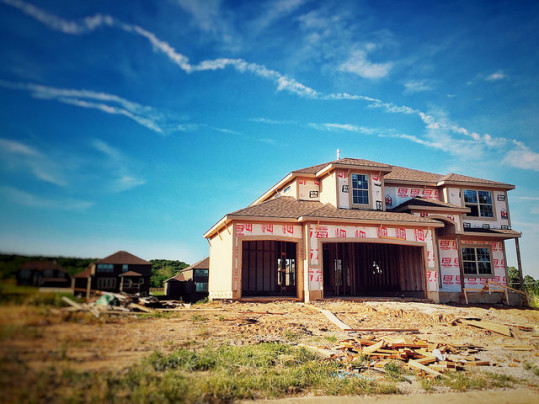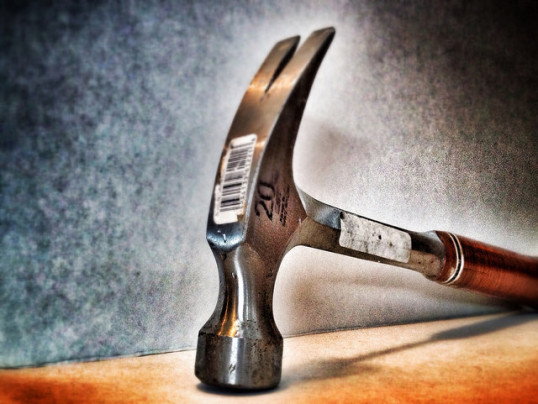When a homeowner refinances their mortgage, they’re replacing their original mortgage with a new one. The reason to do this is to secure better terms on their home loan. So naturally, the right time to refinance a loan is when mortgage rates are lower than they were when the house was purchased. That’s why it’s no surprise that a recent report from Ellie Mae shows that, in September, refinances made up a larger share of total mortgage loan activity than they had in any previous month dating back more than four years. After all, mortgage rates have been trending downward ever since spiking last winter. In fact, they’re now hovering just above historic lows and it’s fueling the increasing interest in refinancing among current homeowners. “The continued decline in interest rates is driving the refinance revitalization that is now accounting for almost 50 percent of all closed loans in the month,” Jonathan Corr, president and CEO of Ellie Mae, said. And with rates expected to remain low for the foreseeable future, homeowners will likely continue to benefit from refinancing their loans and locking in a lower rate. More here.
Archive for October 2019
What Does A Stronger Housing Market Mean For Buyers?
The most recent forecast from Fannie Mae’s Economic and Strategic Research Group says the housing market may be an economic bright spot going into 2020. While other economic indicators are pointing to uncertainty and downside risk, real estate looks strong and may help contribute to economic growth after nearly two years of being a drag on the economy. But while a strong housing market is a positive for the economy, what does it mean for the average home buyer? Well, Doug Duncan, Fannie Mae’s senior vice president and chief economist, says not that much. “While consumer spending, supported by a healthy labor market and gains in household wealth, remains the current expansion’s economic engine, the housing sector appears poised to offer meaningful near-term contributions to growth,” Duncan said. “Unfortunately, expectations for a stronger housing market through the early part of next year are unlikely to offer prospective home buyers much respite from the longstanding affordability issues.” In other words, market conditions will see little change for the foreseeable future. Mortgage rates are expected to stay low, prices will likely continue to increase, and available inventory will depend on whether or not there’s a significant bump in new home construction. More here.
Confidence In New Home Market Grows
Supply and demand have a lot to do with how much it costs to buy a house. When there are more homes than buyers, prices fall and buying becomes more affordable. When there are more buyers than homes, it gets more expensive. That’s why the new home market is so important. After all, new home construction is a big part of the supply side of that basic equation. That’s why a new survey from the National Association of Home Builders is encouraging. Their Housing Market Index asks builders for their opinion of the new home market and scores their responses on a scale where any number above 50 indicates more builders view conditions as good than poor. In October, the index hit 71, its highest score since February 2018. In short, home builders are feeling good about the market for newly built homes and it could help affordability levels. Greg Ugalde, NAHB’s chairman, says there are a few factors that are boosting confidence in the market. “The housing rebound that began in the spring continues, supported by low mortgage rates, solid job growth, and a reduction in new home inventory,” Ugalde said. If builders’ confidence in the market leads to more new home construction, it could have a balancing effect on the market which will help moderate future price increases and overall affordability. More here.
Loans To Buy Homes Up 12% Over Last Year
According to the Mortgage Bankers Association’s Weekly Applications Survey, average mortgage rates rose slightly last week, with increases for 30-year fixed-rate loans with conforming loan balances and loans backed by the Federal Housing Administration. Jumbo loans were unchanged from the week before. But, despite the week-over-week rate increase, demand for loans to buy homes remains higher than last year at the same time. Joel Kan, MBA’s associate vice president of economic and industry forecasting, says the purchase environment is stronger than last year. “While near-term economic uncertainty is still a factor, other fundamental issues, such as a lack of housing inventory in many markets, is preventing purchase activity from meaningfully rising,” Kan said. “However, purchase applications were still much higher than a year ago. This is a reminder that the purchase environment in 2019 continues to be stronger than in 2018.” The year-over-year improvement pushed purchase application demand 12 percent higher than last year, despite a week-over-week week decline. The MBA’s weekly survey has been conducted since 1990 and covers 75 percent of all retail residential mortgage applications. More here.
Is Student Loan Debt Holding Buyers Back?
Young Americans’ financial health is an important factor in the housing market. After all, first-time home buyers historically have accounted for almost half of all home sales. So whether or not younger Americans are ready to buy has an impact on home sales, inventory, prices, etc. That’s why new data from the National Association of Realtors’ consumer website is illuminating. The research shows that the average student loan borrower owes $34,500, which is $8,500 more than the typical down payment of $26,000. In other words, millennials – who hold most of that debt and are at, or approaching, the age when Americans normally buy their first home – may be delaying homeownership due to their student-loan debt. George Ratiu, senior economist with the NAR’s consumer website, says the cost of a college education is having an impact on the financial decisions of young adults. “Student debt has ballooned to an all-time high as the price of education continues to outpace wage growth, and this is holding back many potential buyers from being able to purchase a home,” Ratiu said. “Student debt is already impacting borrowers’ ability to buy a home and education debt is expected to hamper consumers’ financial decisions for many years down the road.” More here.
Where Is Buying A House Most Affordable?
Everyone knows real estate is about location. If you’re looking to buy a house, the zip code you’re searching in will play a big role in determining the price of homes you find and the amount of competition you face from other home buyers. In short, conditions can vary widely from one neighborhood to the next. That’s why, though there are areas in the country where affordability is a concern and finding a home that fits your budget can be difficult, there are also areas where homes are still affordable to people making the median income. So where are the most affordable counties in the country? Well, according to new research from ATTOM Data Solutions, many of them are in the Midwest. For example, Wayne County (Detroit), Cuyahoga County (Cleveland), and Allegheny County (Pittsburgh) were all included among the areas still affordable to average wage earners. Other areas included on the most affordable list included Harris County (Houston), Philadelphia County, Mecklenburg County (NC), Fulton County (GA), Saint Louis County, Milwaukee County, and Marion County (IN). Not surprisingly, the most expensive counties were mostly located near major metropolises and on the West Coast. More here.
Things That Stress Out Sellers More Than Repairs
If you’ve lived in a home for a while, you’ve likely let some things go. Which means, when it comes time to sell, you’ll probably have a pretty substantial to-do list to get done before your home’s ready for sale. But though getting your house ready to put on the market can be stressful for home sellers, it isn’t the top thing that causes them stress, according to a new survey. In fact, the number one thing that stresses out sellers is timing. Selling a house within a desired time frame was named by 56 percent of respondents, followed closely by getting the right price for their house. And with 64 percent of participants saying they’re trying to time the sale of their current house with the purchase of their new one, it’s fairly easy to see why that tops the list. But though timing and price were the most common issues home sellers named, fixing up the house wasn’t far behind. Prepping the house was named by 52 percent of sellers as a point of stress. Overall, almost all respondents said they had some stress associated with selling their home. This isn’t surprising, however. After all, selling a house, buying a new one, and getting ready to move all at the same time is a major life change and a big financial transaction wrapped up into one. More here.







